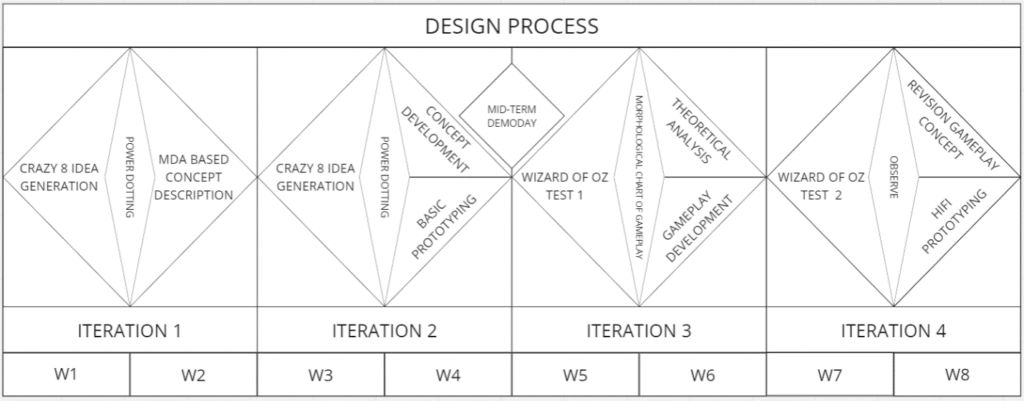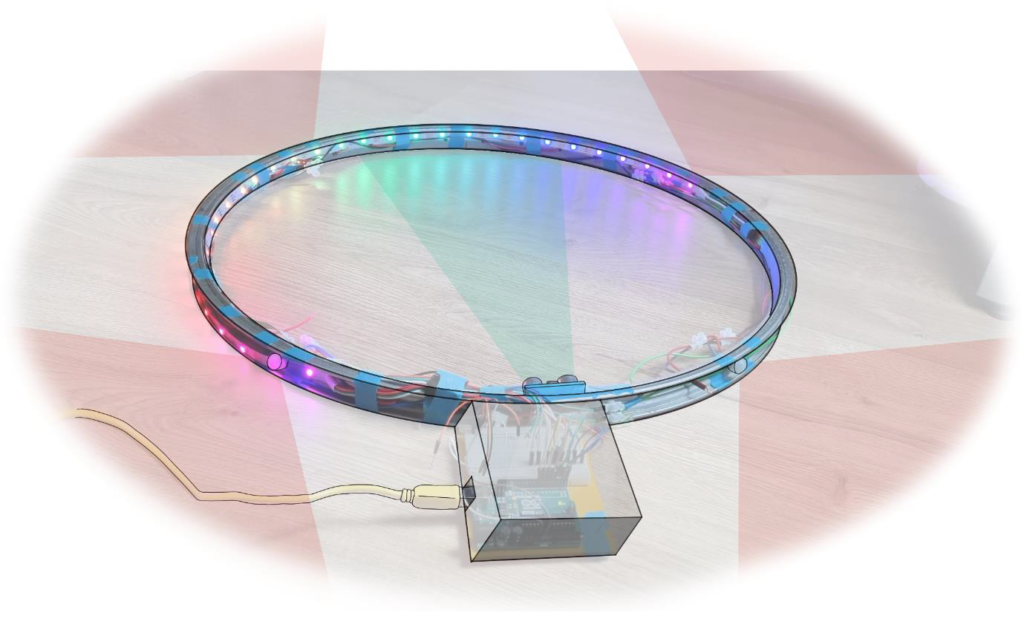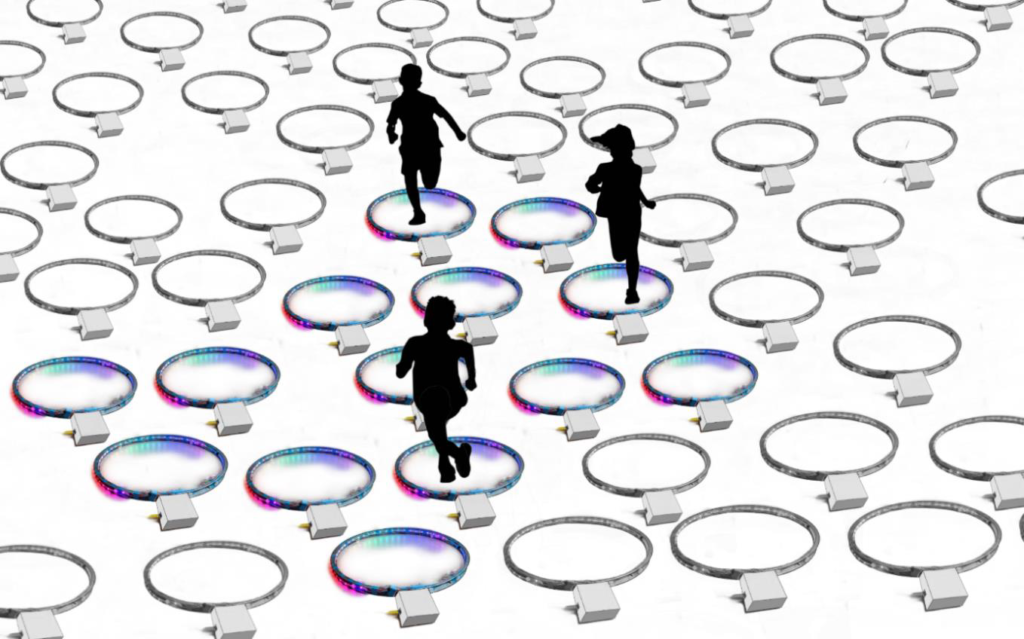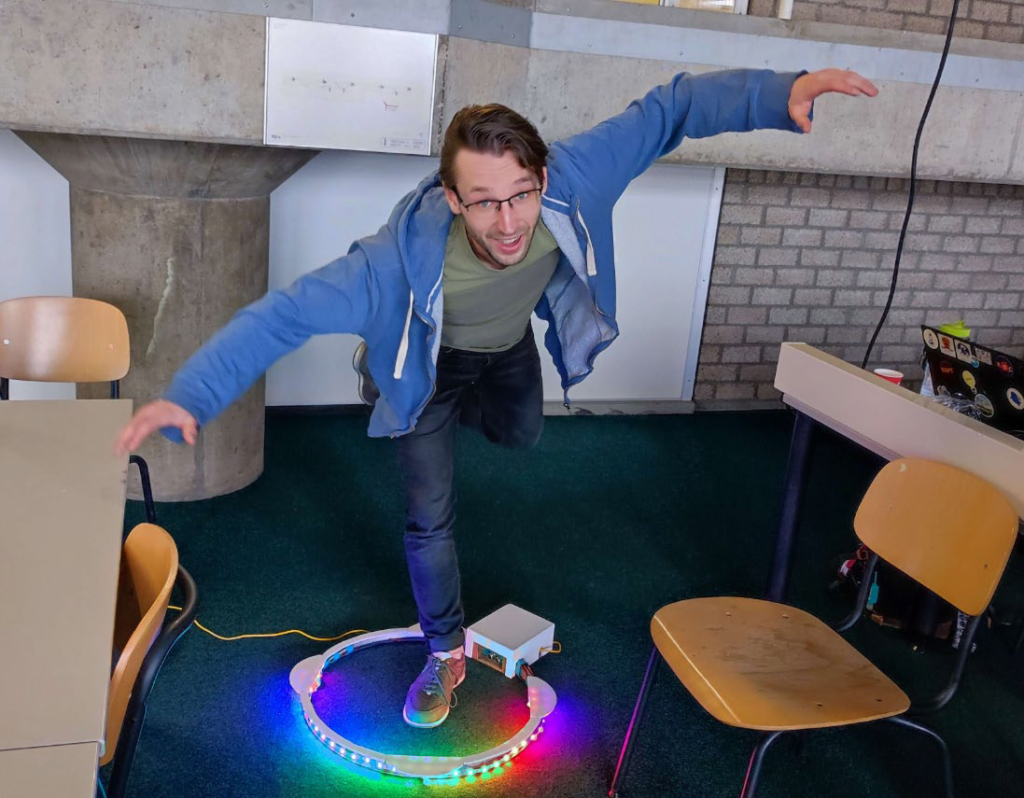Games & Play – Playful Interactions
In the course Games & Play III: Playful Interactions, I explored the intersection of design and playful experiences, focusing on how games and play can be instrumental in product design, especially for influencing behavior change. Throughout the course, we investigated various game design theories and methodologies that are relevant to both the playful design process and the functionality of products that aim to engage users meaningfully.

For the final project, my team and I designed LaserHoops, an interactive play object that transforms any space into a dynamic and engaging playground. Inspired by the classic “The Floor is Lava” game, LaserHoops motivates players to keep moving between hoops, with each hoop acting as a “safe zone.” The goal is to keep the hoops alive by regular interaction while avoiding penalties from surrounding sensors that monitor the space.
Design Process
Our project went through multiple iterations, with user testing and theoretical evaluations informing each phase. We integrated game design principles such as the MDA framework (Mechanics, Dynamics, Aesthetics), Self-Determination Theory, and insights from social and audience interaction research. The process included:
- Concept ideation: Starting with creative exercises like “Crazy 8’s” to generate ideas, which were later narrowed down to form the core gameplay.
- Prototyping & Testing: Utilizing early prototypes for Wizard of Oz testing to gather user feedback and improve the design.
- Final Iteration: Building a functional prototype that included motion sensors, distance sensors, and LED visual feedback, creating a cohesive interactive experience.
Performance and Outcomes
Throughout this project, I applied critical game design frameworks and integrated playful elements into the physical object, achieving a balance between fun, challenge, and interaction. The project was very well received during presentations, with particular recognition of the potential for LaserHoops to foster social play and teamwork in public spaces. In addition I strongly developed my adruino skills both the hard and software prototyping were primarily my efforts.
Key Takeaways:
- Playfulness as a design tool: This course solidified my belief in the power of playful experiences to drive behavior change and engagement in product design.
- Collaboration & Iteration: The success of LaserHoops was a testament to collaborative design processes and iterative development based on user feedback.
- Future Development: LaserHoops has exciting potential for further expansion, including team play modes, modular game mechanics, and new applications in educational and public spaces.



